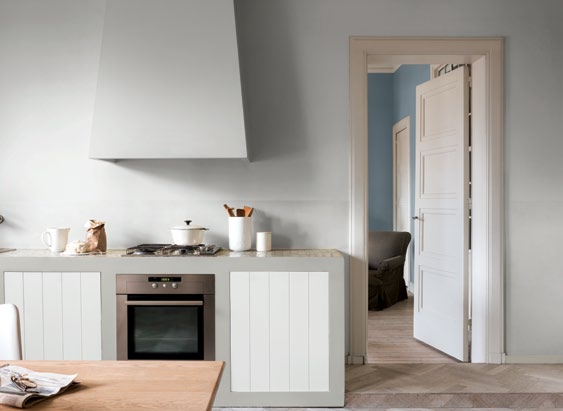Did you know different colours in a room can trigger brain reactions and influence how you feel? Here’s how!


Did you know different colours in a room can trigger brain reactions and influence how you feel? Here’s how!

Vibrant Red
Representing the element of fire, red is the colour of passion. Best used in the kitchen and dining area, brighter reds can enhance the sense of smell and heighten appetites. Shelly Chan, marketing manager of Nippon Paint Singapore, suggests using red in the bedroom too as it’s a stimulating colour for romance and heart rates. But since it’s such an ‘exciting’ shade, it’s best to use crimson hues as accents rather than as a base colour.

Youthful Yellow
“Vibrant and inviting, yellow is associated with energy, summer and vitality,” says Jeremy Rowe, managing director of AkzoNobel Decorative Paints (South East & South Asia, Middle East). “With its sunny effect, it is best suited for living rooms, children’s playrooms and kitchens.” Just a splash of this youthful shade can liven up any space, which makes it particularly good for brightening dim areas too.

Cheerful Orange
Don’t shy away from this bright, energetic colour that’s associated with laughter and celebration. When used in the dining room, orange can encourage appetite and warmth, while in the living room, it can inspire conversation, says Shelley. Likewise, Jeremy recommends using lighter hues or orange in activity-packed areas, such as exercise rooms.

Cool Blue
Blue is a calm and relaxing colour, especially if you use pastels, says Shelly. She recommends using it in bedrooms, home offices and study rooms for a soothing effect. While a deeper blue is said to purify thinking, a lighter shade is known to usher in a sense of peace into your house. However, it is best not to overuse this colour as it could end up feeling a little cold and gloomy.

Refreshing Green
As the colour of nature, it’s no wonder that green hues emit a tranquil and rejuvenating energy. “[green] has a calming effect and brings about a nature-inspired freshness into personal spaces,” says Jeremy. As a cool colour, green can be very restful for the eyes, Shelley says. Lighter shades of green help relieve stress, making it ideal for living rooms, bedrooms and spaces where brain work is needed, such as the study room, Jeremy suggests. “greenery”, a zesty, spirited shade of green, is also Pantone’s colour of the year!

Stylish Grey
“Too much grey can make you feel passive and lacklustre, but using the right hues can make a room look more formal and stylish,” says Jeremy. “use dark tones as accents to prop up splashes of white, pink or orange to amplify positive feelings in tv corners, kitchen nooks or bathrooms.”

Cosy Pink
“This blissful colour is not just for little girls. Pink is soothing and comforting; it can promote empathy, helping to create a peaceful environment,” says Jeremy. While bright pink colours are best suited for the playroom, lighter shades are preferred for bedrooms or living areas. “Softer pinks have a cosy effect, being both warm and inviting. this makes it great for baby rooms, children’s playrooms or chill-out corners.” However, too light a shade of this sweet colour can create a lethargic feeling, so try using varying shades.
TEXT: ELIZABETH LIEW & GOWRi SOMASUNDARAM.
PHOTOS: AKZONOBEL DECORATIVE PAINTS, BITANGRA, LIVING4MEDiA, 123RF.COM, Y-AXIS PTE LTD.























